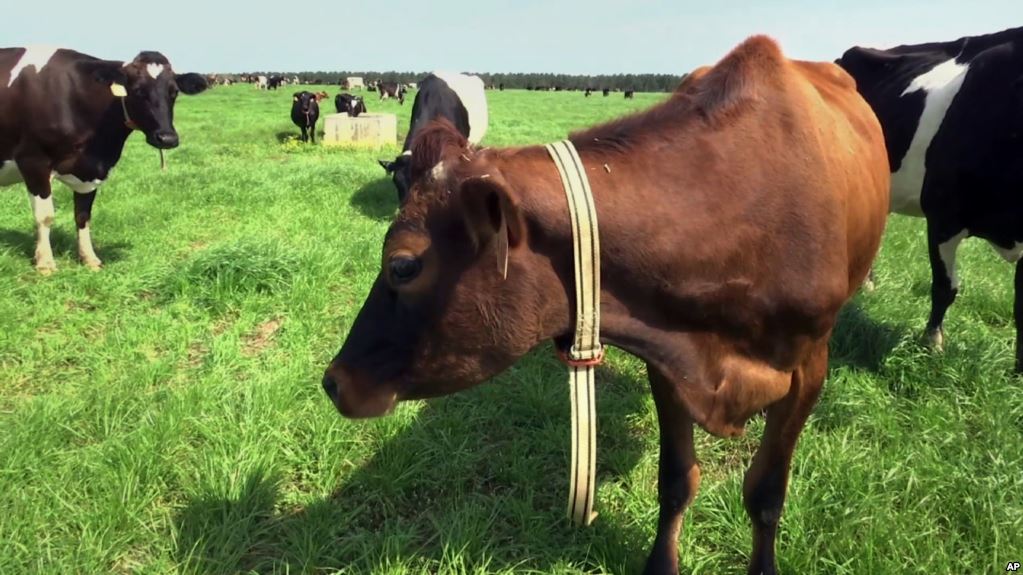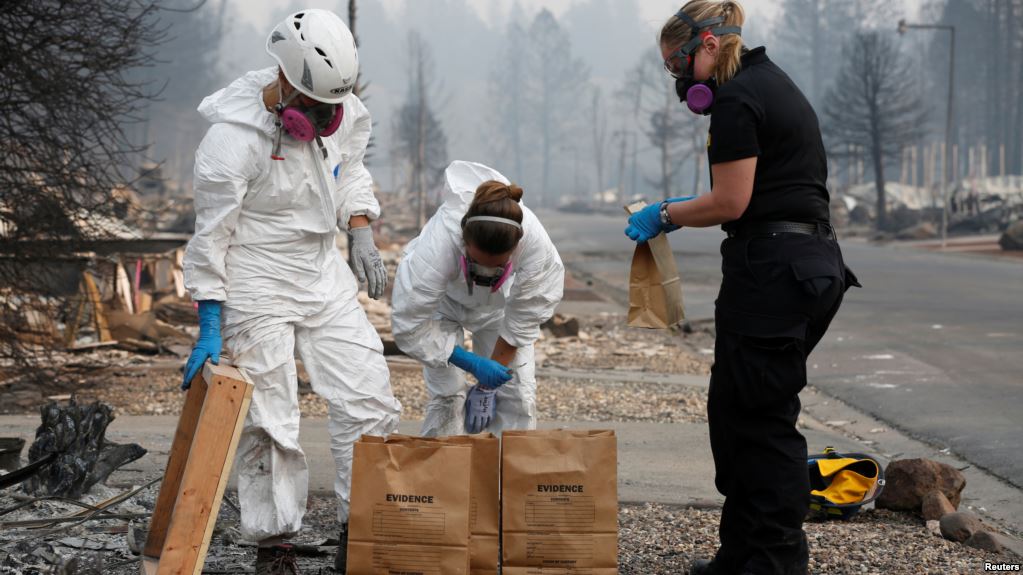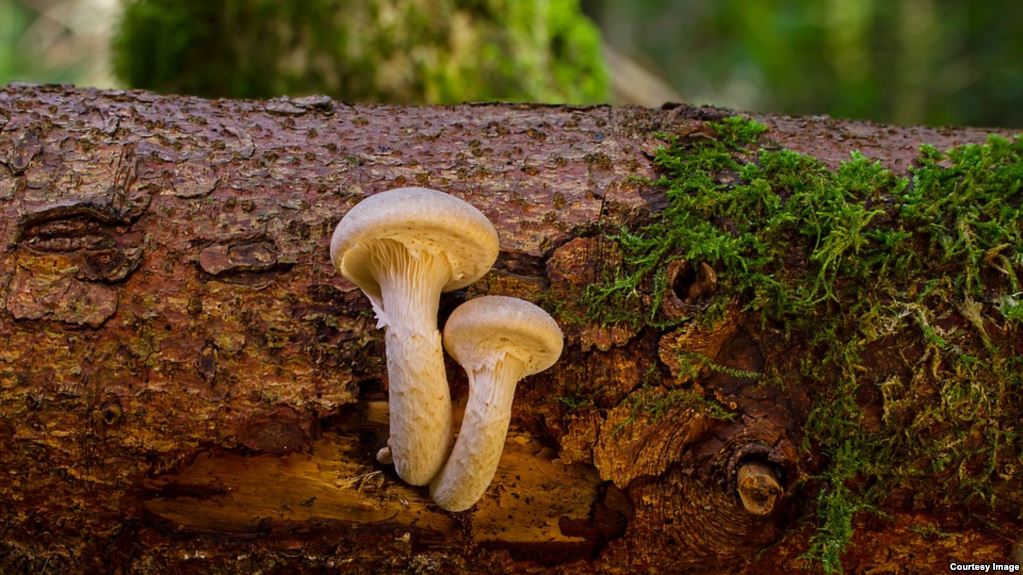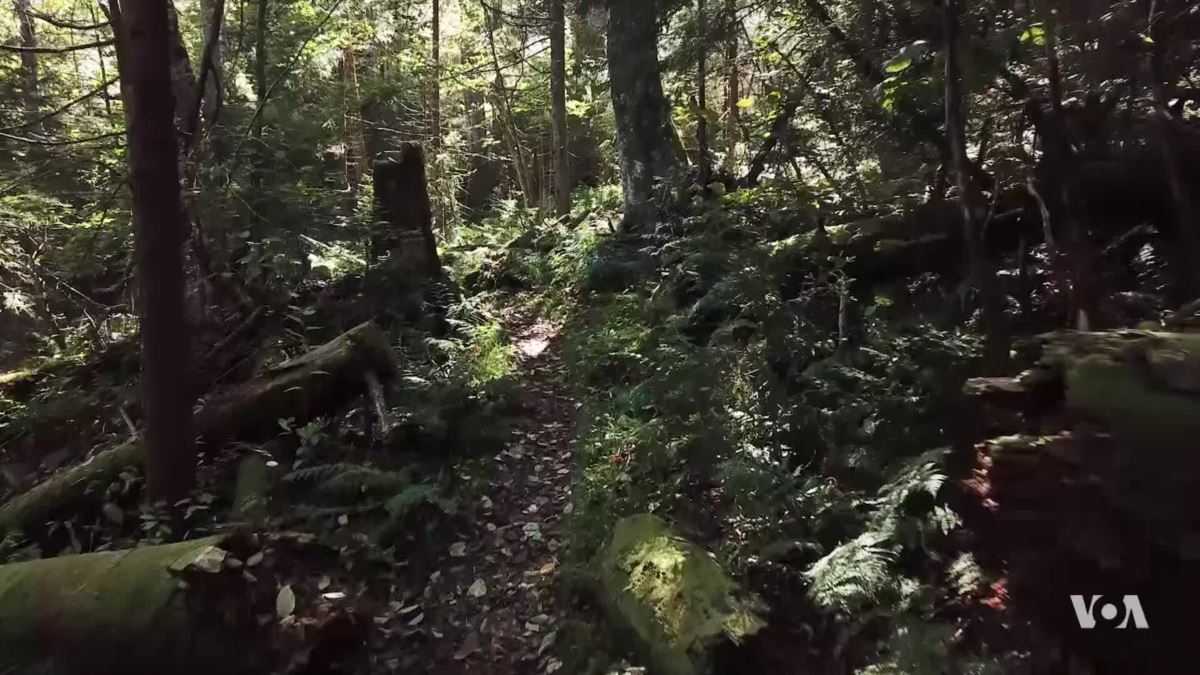뉴스&스피킹(영자신문)
하루 10분이면 영어에 대한 두려움을 극복하고 누구나 유창하게 영어를 구사하실 수 있습니다.
-
 ‘Smart Farm’ Technology Tracks Behavior of Cows Artificial intelligence (AI) has arrived on the farm.
‘Smart Farm’ Technology Tracks Behavior of Cows Artificial intelligence (AI) has arrived on the farm.
A Dutch company has developed technology to follow the movements and activities of cows. The high-tech system, powered by AI and motion sensors, is called “The Intelligent Dairy Farmer’s Assistant.”
The company, Connecterra, launched the system in the United States in December 2017 after several years of testing and operations in Europe.
A device is put around the neck of the cow to record its movements. This information is then processed by a computer that uses AI to learn about the animal’s behavior over time.
The system can tell farmers what the cow is doing in real time.
This information can help predict when cattle get sick, become less productive or are ready for mating.
Richard Watson owns the Seven Oaks Dairy in Waynesboro, Georgia. He was one of the first American farmers to use the high-tech system.
“It can pick up whether the cow is eating, whether it is ruminating, whether it is walking, whether it is drinking, whether it is laying down, standing up.”
Watson said the system is a big help because it is impossible for farmers to keep up with the activities of each cow individually.
He added that having a computer identify which of his 2,000 cattle need attention could help improve farm productivity by up to 10 percent. He estimates this difference could greatly increase his profits.
“Just a 10 percent or five percent increase, or improvement in productivity, means hundreds of thousands of dollars to us, aside from the fact that we just want happier and healthier and more welfare in our animals, anyway.”
Watson says he sees the technology being used in many large farming systems if it continues to be successful over time.
The founder and head of Connecterra is Yasir Khokhar. He says the idea for the system came while he was living on a dairy farm south of Amsterdam.
“It turns out the technology farmers use is really outdated in many respects,” Khokhar told the Associated Press. He added that most of the technology that does exist is difficult to use. He says modern agriculture greatly needs new technology like this.
The company says information about the cows can be collected and seen on a cellphone or other mobile device. A text message can also inform farmers of concerns involving the animals.
Some American farmers are using other sensor equipment to receive messages about their cows.
Moocall, a business based in Ireland, says its products can send farmers a text message when their cows are ready to give birth. A device put on the cow’s tail measures the number of contractions to predict the most likely time of birth.
The company also sells a product called Moocall HEAT. It says this device uses temperature sensors to predict the exact time a female is in heat, the time that she is ready for mating.
Mary Mackinson Faber is a fifth-generation farmer who lives near Pontiac, Illinois. She said such devices could be great tools to inform farmers about the condition of their cows before problems happen.
“That if a cow is calving it will shoot us a text, and we can – you know – come out here and check on it.”
Faber added that while the technology is a very useful tool, she believes it will always take more than machines to do what is right for the animals.
“There are certain tasks that it can help with, and it can assist us, but I don’t think it will ever replace the human.”
I’m Bryan Lynn.
View -
 People Are Buying Less with Bitcoin The use of bitcoin has decreased sharply in 2018.
People Are Buying Less with Bitcoin The use of bitcoin has decreased sharply in 2018.
Chainalysis is a company that researches bitcoin, a digital form of money that is not controlled by a state. The company said that the value of bitcoins traded by major payment processing companies has fallen by 80 percent in the first nine months of this year.
Some financial experts suspect this is because bitcoin is struggling to change from a risky asset into a widely-accepted currency.
At the same time, the exchange value of bitcoin is now becoming relatively stable – although sharp changes remain common.
This week, bitcoin’s value again dropped sharply to its lowest level this year.
But, financial experts say stability is what the currency needs to be used as money for payment.
Joni Teves is with the bank UBS in London. She noted, “There would have to be a stability requirement if it is to become another form of money.”
However, that is not the only thing that Teves is concerned about.
“One thing that would take bitcoin into the mainstream is scalability,” she told Reuters news service. She said people need to be able to process it just like they do money and in very large amounts on a large scale.
That could be a problem.
Bitcoin, and currencies like it, are based on blockchain technology. That means all activity related to bitcoin is recorded and confirmed by computer in a blockchain. Blockchain technology permits records to be checked and stored securely, but requires a lot of computing power.
The system can only process a small number of transactions compared to, for example, a major credit card company.
This suggests that the use of the currency by many people could be difficult.
Chainalysis said its research shows that in the month of December the value of payments made with Bitcoin reached $427 million. By September, however, that number had fallen to $96 million.
The company studied 17 bitcoin payment processors, including one of the biggest, BitPay. Reuters reports that most sellers which accept bitcoin use a processor like BitPay to change bitcoin into a normal currency.
However, information about bitcoin payments remains incomplete.
Early successes
Through its first 10 years, Bitcoin attracted many different investors who believed the currency would change traditional finance. In December, the value of a bitcoin rose to nearly $20,000.
Since that time, the value has fallen a lot.
That has affected some businesses that had expected profits to rise with the growth of bitcoin and other blockchain currencies.
Computer chip designer Nvidia blamed a lack of demand for its products on weak bitcoin demand. The company’s stock price has fallen sharply since October.
Some experts argue stability in bitcoin prices is not enough. They say bitcoin use needs to be faster and less costly. Teves said that clearer rules by financial officials across the world would also help people gain trust in the currency. But such rules are expected to take time as the technology develops.
One new technology promises to make bitcoin transactions faster. The so-called lightning network adds code to bitcoin blockchain that can make transactions faster and less costly.
Users say lightning lets them send money to one another on the network without completing a blockchain. Ed Cooper is with Revolut, a financial technology company. He said, “Lightning solves some of bitcoin’s scaling issue.”
I’m Mario Ritter Jr.View -
 California Fire Victims’ Families Asked to Give DNA Officials in Northern California say a deadly wildfire that began two weeks ago is almost completely contained.
California Fire Victims’ Families Asked to Give DNA Officials in Northern California say a deadly wildfire that began two weeks ago is almost completely contained.
The Associated Press reports that the wildfire, known as the “Camp Fire,” was 95 percent contained Thursday. It has been blamed for more than 80 deaths. Three other people died in a second major fire near the city of Los Angeles.
State officials are using DNA tests in an effort to identify those killed by the Northern California wildfire. DNA is a substance that carries genetic information in the cells of plants and animals. The testing tool produces results in just two hours.
The test, called Rapid DNA Identification, can examine DNA from small pieces of bone or other human remains. It then compares it to genetic material provided by relatives of the missing individuals.
But the technology depends on people willing to volunteer their DNA for testing. And there have not been nearly as many volunteers as officials had hoped for.
The Camp Fire destroyed the town of Paradise and caused heavy damage to nearby areas. As of Thursday night, at least 84 people were confirmed dead. And the official list of those missing had about 700 names.
The Associated Press noted Wednesday that only about 60 people had provided DNA samples to area laboratories. That number came from Annette Mattern, a representative of ANDE – the company that donated the technology.
Mattern said, “We need hundreds. We need a big enough sample for us to make a positive identification on these and to also give a better idea of how many losses there actually are.”
Differences in information, the inability of relatives to travel to Northern California and mistrust of the government may be keeping the sample number low.
One woman’s story
Tara Quinones says she had not heard from her uncle, David Marbury, for eight days before she drove from the San Francisco area to give a DNA sample. A worker took samples from her skin and inside her cheek and then asked questions about who she was looking for and their relationship.
The owner of her uncle’s home confirmed the house burned down. The uncle’s car was still on the property.
But Quinones had no idea if any remains were found. She said giving her DNA sample is the one way she could help find her uncle.
Like Quinones, some people have offered their DNA after learning about the identification effort. Others offered it after officials told them that remains from a probable family member had been found.
Mattern said it has been surprisingly easy to get DNA from the remains of those who died in the fire.
ANDE won a contract in 2009 to do research and development for federal government agencies. The company’s technology has been used in test programs for many years.
But this is the first time ANDE has helped identify victims after a natural disaster. The company has donated seven machines and over 10 workers to the effort.
Mattern said local law enforcement officials are seeking a way to make it easier for families who live outside northern California to provide samples.
Local law enforcement and the company have said that the DNA samples would be destroyed once they are no longer needed.
I’m Jonathan Evans.View -
 Mushroom Hunting Gains Popularity in US From VOA Learning English, this is the Health & Lifestyle report.
Mushroom Hunting Gains Popularity in US From VOA Learning English, this is the Health & Lifestyle report.
What used to be an outdoor activity for only extreme foodies is now becoming more and more popular in many parts of the United States.
I am talking about mushroom hunting!
Mushroom hunters – also called foragers -- spend hours, even days, in wooded areas searching for wild mushrooms.
Dennis Aita lives in New York City. He has been a mushroom hunter since the 1980s. He first became interested in them while exploring the Appalachian Trail in the 1970s. As he hiked, he began noticing mushrooms and other wild edibles. So, he decided to try foraging for mushrooms.
Aita says mushroom foraging changed his relationship with the environment. When hiking, he says, he would walk quickly and not see much of the plants and trees around him.
However, to find mushrooms, you must walk slowly.
“Um, by looking for mushrooms, you tend to slow up a little bit. You get a chance to see the birds. You get a chance to see the trees and shrubs, little animal life and everything.”
So, it is necessary to pay close attention to the details on trees and on the ground.
But this presents its own problem.
Mushroom foragers, with their heads turned downward, can easily get lost in the woods. In the States, people have died after spending all night unprotected in the cold woods -- lost while hunting mushrooms.
So, what makes people go out for hours and hours searching for a fungus? Mushrooms, after all, are often found growing from dead and dying things in the woods.
Well, some people just love mushrooms! They love finding them in unexpected places. They love cooking them. And they love eating them. Many restaurants buy different kinds of mushrooms for the meals they prepare. So foraging can be profitable.
Mushrooms grow very well in wet climates. Some countries in Europe, parts of Russia, Japan and Iran are known for having different mushrooms as well as a food culture based on mushroom foraging.
Dennis Aita has traveled to Canada, Italy, India, Nepal and Argentina in search of mushrooms. He says some cultures seem to like them more than others.
“...You go to Italy, not only do you go mushroom hunting, but of course, there’s great food there, and they cook with mushrooms in a very big way. Italians, they love mushrooms. Most of the Europeans eat mushrooms. Many of the Asians do. But, um, there are certain cultures that don’t.”
Health benefits
Experts say eating mushrooms can be good for your health. Mushrooms contain the mineral selenium. This mineral helps the liver to work properly. The mineral also helps to prevent infection in the body and may decrease the growth of cancerous tumors. Most fruits and vegetables do not have selenium.
Mushrooms may also help you to lose weight. They are high in fiber – some more than others. So, they can make us feel fuller for long periods. As a result, we eat less.
Mushroom are healthy (except for the ones that can kill you)
So mushrooms are good for you and can be tasty. But foraging on your own can be dangerous.
For those who have never been mushroom hunting, but want to start, Dennis Aita has one important suggestion: do not do it alone!
“Well, they should join a club – a mushroom club. If there’s a club in your area – that's the best way to learn about, you know, which mushrooms to eat. You go on walks. And then you start to learn which books to buy. You know, you buy a few mushroom books with some pictures. And that’s the best way to do it.”
Deadly mushrooms
With mushroom foraging, it is important to know that some mushrooms can kill you. The online Encyclopedia Britannica lists the most deadly ones and gives pictures of each.
One thing that makes some mushrooms so deadly is that they look like perfectly common, edible mushrooms. So they are sometimes collected and eaten by mistake.
For example, the Death Cap is perhaps “the deadliest of all mushrooms.” Found throughout Europe, it looks similar to two types of edible mushrooms.
Another thing that makes poisonous mushrooms so deadly is that signs of poisoning can take a long time to show. Or they show themselves and then go away. People think that they are in good health and fail to get proper treatment.
Sometimes the signs are similar to influenza. So, mushroom poisoning can easily be misdiagnosed.
For whatever reason, if left untreated, mushroom poisoning can result in serious health conditions, like kidney failure, or even death.
That is why Aita warns beginners to go out foraging with experienced mushroom hunters.
“As I say, it’s very dangerous. People really should not go out to the woods and come back with things and start eating mushrooms. No. It can be a deadly endeavor.”
And that’s the Health & Lifestyle report.
I’m Anna Matteo.View -
 Are Forests an Answer to Carbon Pollution? Burning coal for energy adds planet-warming carbon dioxide, or CO2, to Earth’s atmosphere. As the planet heats up, experts warn that simply cutting greenhouse gas emissions will not be enough to avoid possibly disastrous levels of global warming.
Are Forests an Answer to Carbon Pollution? Burning coal for energy adds planet-warming carbon dioxide, or CO2, to Earth’s atmosphere. As the planet heats up, experts warn that simply cutting greenhouse gas emissions will not be enough to avoid possibly disastrous levels of global warming.
CO2 must also be removed from the atmosphere, they say.
Existing experimental machines that pull CO2 directly from the air are too costly to be widely used.
But a new report from the U.S. National Academy of Sciences, Engineering and Medicine says effective carbon-removal technology already exists.
It is not costly, or even complex science. It is forests.
The report explains that planting trees and overseeing forests are cost-effective ways to clean the air. They also work well across large areas.
Forests used to cover large areas of the Appalachian Mountains in the eastern United States. In the state of West Virginia, a kind of mining known as strip mining left the land there bare, without trees. Now experts are working to bring back the forests that once covered much of the state.
West Virginia's Monongahela National Forest is home to a rare group of trees. They are called virgin woods; they have never been touched by humans.
Shane Jones is a biologist with the U.S. Forest Service.
"Living in the East, there's not many places you can go and be untouched by Man."
Jones says the trees there were missed by mistake when the surrounding forest was cut down for wood many years ago.
That mistake turned out to be a good thing; red spruce forests such as those in the Monongahela are great at taking CO2 out of the atmosphere and locking it into the soil.
Jones explains as he runs his hand through the dark black earth beside a tree.
"See all that organic material? It's black because it's incredibly high in carbon."
Over the years, coal mining and cutting forests took over 90 percent of the red spruce forests from the Appalachian Mountains.
Now, as the planet warms, the need for forests to remove coal’s CO2 is increasingly urgent.
Chris Barton works for the University of Kentucky. As he walks along the Appalachian land, he says the needs of warm-weather rainforests get most of the world’s attention.
"But here in the temperate region of the world, in Appalachia, four hours away from Washington, D.C., we have billions of trees that potentially we could be planting."
So, Barton started a group called Green Forests Work. Its members aim to put trees back on the roughly 400,000 hectares of land that was cleared away by strip mining.
However, Barton explains, the land has problems.
"If you went out and planted trees on these sites, they just didn't grow. The ground was way too compacted. Water didn't infiltrate. Roots can't penetrate. Oxygen can't circulate in those environments."
The solution? Using heavy equipment, workers tear up the ground. The process lets the trees they plant put down roots.
Barton says not everyone believes the solution is a good idea.
"We've had a lot of people kinda look at us twice. But the really interesting thing about it is, after we do it, there's no question that that was the right thing to do."
And it has worked. Forests are coming back to the grounds.
Scientists say that, in West Virginia alone, restoring red spruce forests to the area could send what is equal to 56 million barrels of oil into the ground. But it will take time. A long time.
Around the world, experts say, nature offers powerful tools to fight climate change. But patience is needed, Jones says.
"It's really awesome to see a tree planted eight years ago that's now waist high. But at the end of the day, at the end of my day, we're barely getting started. Because our main goal with the restoration work that we do here is to basically take actions to then let nature take over."
Nature works, but slowly, in its own time.
I’m Anne Ball.View

